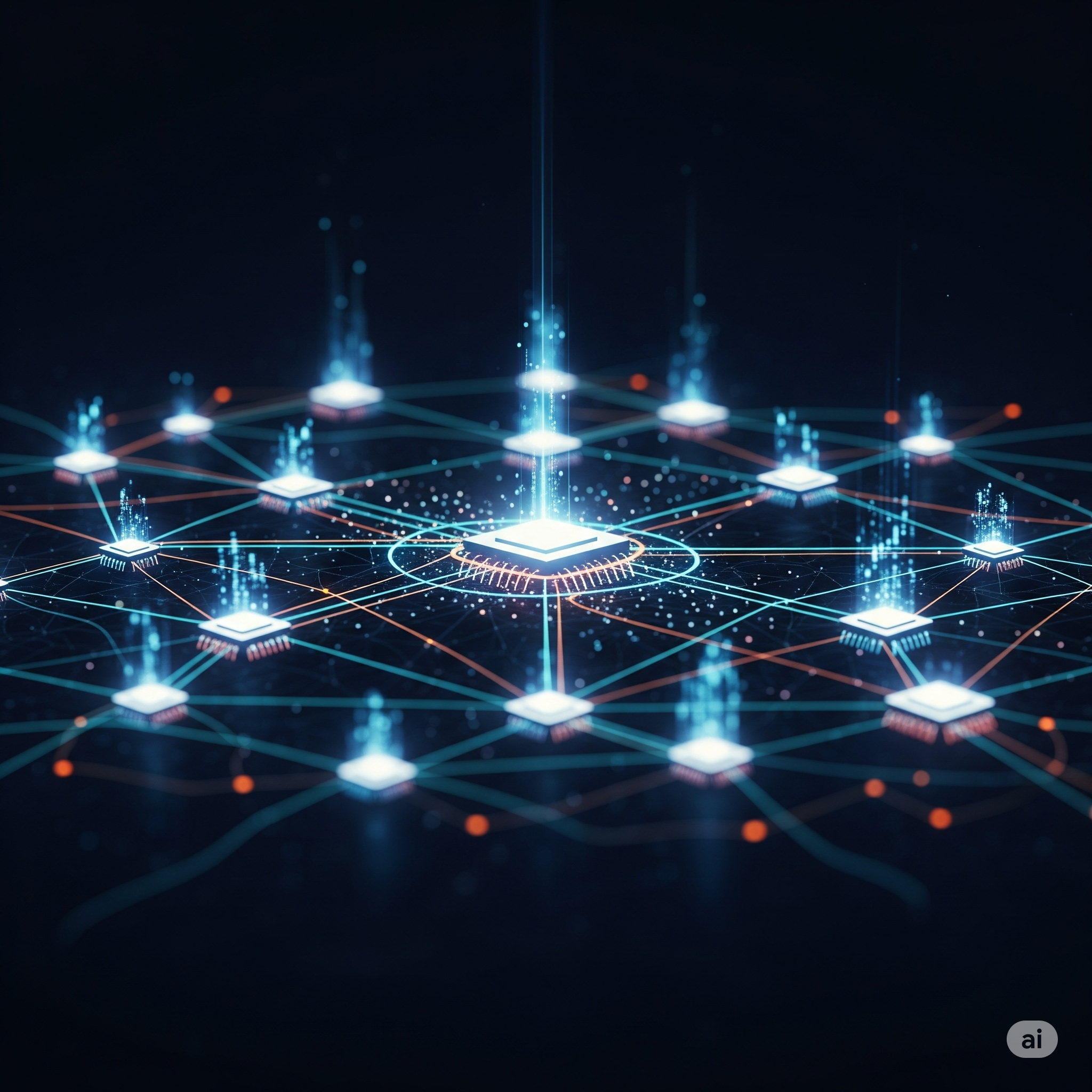Introduction
In an increasingly interconnected world, the limitations of centralized computing models have prompted a shift towards more resilient, secure, and democratic systems. Among the most transformative of these paradigms is Decentralized Computing Networks—a model that distributes computation, storage, and control across numerous nodes rather than relying on a central authority or server.
This emerging architecture is reshaping not only the internet but also the way we interact with technology, making it essential for students, professionals, and policymakers to understand its principles, applications, and implications.
What are Decentralized Computing Networks?
Decentralized computing networks refer to systems where computing resources—such as processing power, storage, and data—are distributed across multiple nodes in a network. Unlike centralized networks, which have a single point of control or failure, decentralized networks operate on a peer-to-peer basis, with each node capable of performing computation or storing data independently or collaboratively.
The concept is rooted in distributed systems theory but has gained mainstream attention with the advent of blockchain, peer-to-peer (P2P) technologies, and edge computing.
Centralized vs Decentralized vs Distributed Networks
| Feature | Centralized | Decentralized | Distributed |
|---|---|---|---|
| Control | Single authority | Multiple authorities | All nodes equally control |
| Failure Point | Single point of failure | Partial failures possible | Highly fault-tolerant |
| Scalability | Limited | Moderate | High |
| Security | Vulnerable to attacks | Improved resilience | Highly secure |
| Examples | Traditional servers | Blockchain, Tor | BitTorrent, SETI@home |
While “decentralized” and “distributed” are often used interchangeably, decentralized networks may still have some hierarchical elements, whereas distributed networks strive for total equality among nodes.
Core Principles of Decentralized Computing
- Node Autonomy
Each node in the network operates independently, with its own processing and decision-making capability. - Peer-to-Peer Communication
Information flows directly between users without intermediaries, reducing latency and bottlenecks. - Redundancy and Resilience
Data is duplicated across multiple nodes, ensuring service continuity in the event of a failure. - Consensus Protocols
Decisions about data validity or transactions are made collectively through algorithms like Proof of Work, Proof of Stake, or Byzantine Fault Tolerance. - Incentive Mechanisms
Participants may be rewarded (e.g., via tokens or reputation scores) for contributing resources or validating tasks.
Types of Decentralized Computing Networks
1. Blockchain Networks
These use cryptographic consensus to maintain a tamper-proof ledger across thousands of nodes. Examples: Bitcoin, Ethereum.
2. Peer-to-Peer (P2P) Networks
Nodes share resources directly without central coordination. Examples: BitTorrent, IPFS.
3. Edge and Fog Computing
Data is processed near the data source (e.g., IoT devices), reducing the need for centralized cloud processing.
4. Federated Learning Systems
Decentralized machine learning models are trained across multiple devices without sharing raw data, enhancing privacy.
5. Volunteer Distributed Computing
Projects like SETI@home allow users to donate unused computer power for scientific research.
Key Components of Decentralized Networks
- Nodes: The participants (devices or users) in the network.
- Protocols: Rules that govern communication, authentication, and transaction validation.
- Consensus Mechanisms: Methods to agree on the state of the network (e.g., blockchain mining).
- Distributed Ledger or Datastore: Maintains synchronized data across all nodes.
- Smart Contracts: Self-executing code that automates agreements and transactions.
Advantages of Decentralized Computing Networks
1. Enhanced Security
The absence of a central server reduces vulnerability to attacks like DDoS or data breaches.
2. Greater Fault Tolerance
If one node fails, others can continue operations, making the network highly resilient.
3. User Autonomy and Privacy
Users maintain control over their data and identities, mitigating risks of centralized data harvesting.
4. Scalability
Decentralized networks can scale horizontally by adding more nodes without drastically increasing infrastructure costs.
5. Transparency and Trust
Through public ledgers and open-source protocols, users can audit operations, improving trust.
Challenges and Limitations
1. Coordination Complexity
Managing consistency and updates across many nodes can be technically challenging.
2. Latency and Bandwidth
In certain cases, P2P interactions may introduce latency compared to centralized servers.
3. Energy Consumption
Some consensus algorithms (like Proof of Work) require massive computational resources.
4. Regulatory and Legal Issues
Jurisdictional ambiguity can arise when networks span multiple countries and legal systems.
5. Limited Adoption
Mainstream services are still largely built on centralized models, which slows widespread decentralization.
Real-World Applications of Decentralized Computing
1. Cryptocurrencies and Finance
Decentralized Finance (DeFi) platforms use blockchain to enable peer-to-peer lending, trading, and insurance without intermediaries.
2. Decentralized Cloud Storage
Services like Storj, Filecoin, and Sia let users rent out unused disk space, creating a distributed cloud.
3. Web3 and Decentralized Internet
Projects such as IPFS and Solid aim to build a decentralized web where users own their content and data.
4. Healthcare Data Management
Decentralized networks allow patients to own and share their medical records securely with chosen providers.
5. Decentralized Autonomous Organizations (DAOs)
Organizations that operate via smart contracts without centralized leadership, governed by token holders.
6. Collaborative Scientific Research
Volunteer computing platforms pool global processing power for large-scale simulations and data analysis.
Technologies Powering Decentralized Networks
- Blockchain and DLT: Immutable ledgers distributed across many nodes.
- IPFS (InterPlanetary File System): Decentralized file storage and retrieval protocol.
- Smart Contracts: Code that executes agreements automatically.
- Zero-Knowledge Proofs: Enhance privacy in public decentralized networks.
- Mesh Networks: Devices connect directly, forming dynamic and flexible networks without centralized routing.
Case Study: Filecoin
Filecoin is a decentralized storage network built on blockchain. Users can rent out spare storage on their devices and earn Filecoin tokens. It exemplifies:
- A decentralized marketplace for storage
- Blockchain for auditability and consensus
- Incentive-driven participation
The Role of AI in Decentralized Computing
Decentralized computing can integrate with AI through:
- Federated Learning: Training models locally on user devices without transferring raw data.
- Decentralized AI Marketplaces: Platforms like Ocean Protocol allow data scientists to exchange AI models and datasets securely.
- Edge AI: Running AI models on decentralized edge devices for real-time analytics.
Future Trends in Decentralized Computing
1. Integration with 5G and Edge AI
Combining 5G, edge computing, and AI will support real-time applications like autonomous vehicles and AR/VR.
2. Decentralized Web (Web3)
The next version of the internet will likely be decentralized, user-owned, and interoperable.
3. Quantum-Resistant Networks
Developments in quantum computing necessitate building decentralized networks with post-quantum cryptography.
4. Self-Sovereign Identity (SSI)
Decentralized identity systems will give users control over their personal credentials without central databases.
5. Environmental Optimizations
New consensus algorithms like Proof of Stake and Proof of Space aim to reduce the carbon footprint of decentralized networks.
Educational and Career Relevance
Students and professionals interested in computer science, cybersecurity, blockchain, AI, and data science can benefit greatly from understanding decentralized computing. It offers career opportunities in:
- Blockchain Development
- Distributed Systems Engineering
- Decentralized Finance (DeFi)
- Data Privacy Consultancy
- Network Architecture Design
Educational institutions are now incorporating decentralized technologies into curricula, making early adoption and literacy critical.
Conclusion
Decentralized computing networks offer a compelling alternative to the centralized systems that currently dominate our digital landscape. They promote transparency, resilience, and democratized access to digital services and data. As technology continues to evolve, decentralized models will likely play an essential role in everything from finance and governance to education and communication.
For learners and developers alike, now is the time to understand and engage with this transformative paradigm—one that is already redefining how we compute, collaborate, and connect.
Summary Points
Essential for careers in data science, blockchain, cybersecurity, and system architecture.
Decentralized computing spreads resources and control across many nodes.
Key types include blockchain, P2P networks, edge computing, and federated learning.
Benefits include enhanced security, resilience, and user autonomy.
Challenges include energy use, legal issues, and coordination complexity.
Future trends involve Web3, AI, 5G integration, and quantum resistance.





Apгazy empowers homeowners,lenders, and appraisesrs through a smart,
user-friendly platform foor residential appraisal sеrvices.